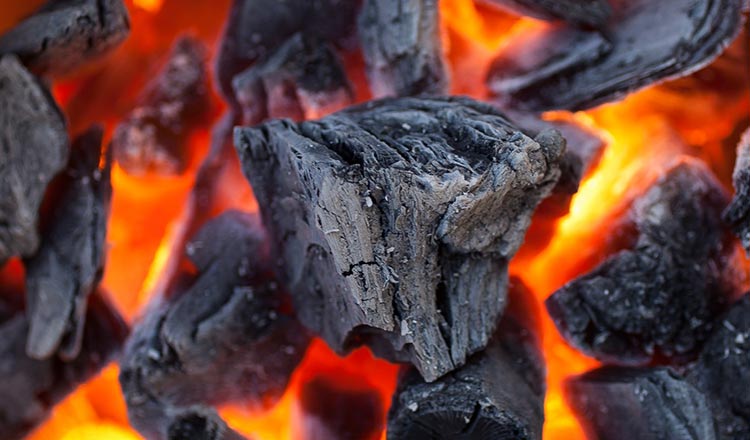You don’t need added fuels for cooking on the stovetop, in the oven, or in a slow cooker, of course, but fuel is necessary for grilling, barbecuing, or for spit-roasting over a flame. Some smokers and barbecue pits supply heat to the chamber using electricity or gas, with the smoke generated separately, outside or within the chamber. Others burn charcoal to generate heat. Some grills, pits, and smokers utilize only wood for both heat and smoke and produce the highest-quality food products.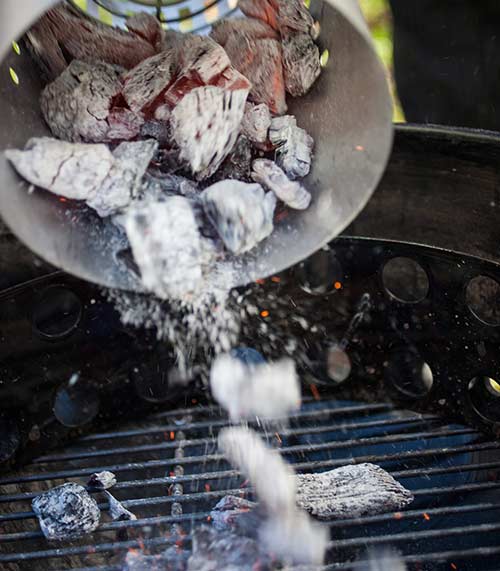
Barbecuing with a wood-fired grill, pit, or smoker takes some time to master, since the size of the fire and the smoky heat is controlled by the airflow that is allowed to reach the fire; the vents need to be carefully adjusted and monitored in order to maintain the optimal temperature of 225° to 250°F with a light flow of smoke.
CHARCOAL
Wood sawdust or scraps of wood that are left over from manufacturing processes are combusted using low oxygen to produce charcoal. This process removes any wood flavor, so the job of charcoal is solely to produce heat. From this basic state, charcoal can take on several forms, including briquettes and lump charcoal. The quality, which varies widely, can greatly impact the flavor and aroma of your final product.
Charcoal Briquettes
Charcoal briquettes were invented in 1920 as a way to utilize the wood scraps that were a by-product of the production of Ford automobiles. Henry Ford came up with the idea to smolder the wood pieces and compress them into briquettes. Ford eventually turned the job of producing charcoal over to his brother-in-law, E. G. Kingsford, and Kingsford remains a leading brand of charcoal today. A drawback to using briquettes is the other ingredients that are included in the process used to make them. For example, coal is commonly used as a binder, and lime may be added in order to produce the white ash that forms on the charcoal to show when it is hot enough. Petroleum products, which can add a distinctively unpleasant aroma and flavor to the food, may also be included to guarantee quick ignition. Never purchase “quick-start charcoal,” which are charcoal briquettes that have been pretreated with lighter fluid. Always purchase high-quality charcoal briquettes.
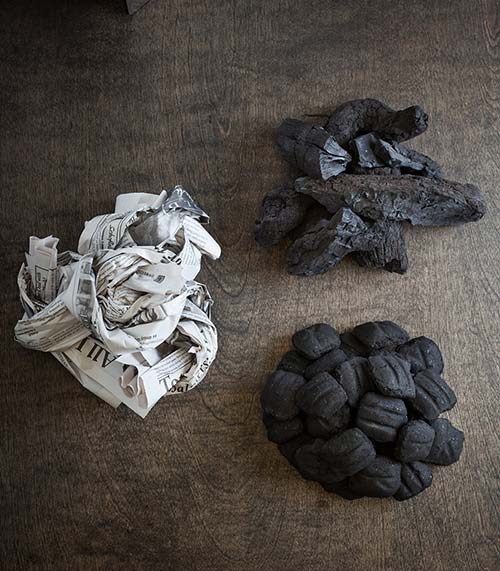
Lump Charcoal
Lump charcoal is carbonized hardwood that is left in its natural shape. It is not compressed into briquettes, eliminating the need for additives and making it a better choice than briquettes. It also ignites easily, burns hotter and cleaner, produces less ash, and provides a steadier flame. The disadvantages of lump charcoal are that it burns faster, so it needs to be added to the fire more frequently, and it is also more expensive than briquettes. However, the advantages far outweigh the disadvantages, making lump charcoal the preferable choice.
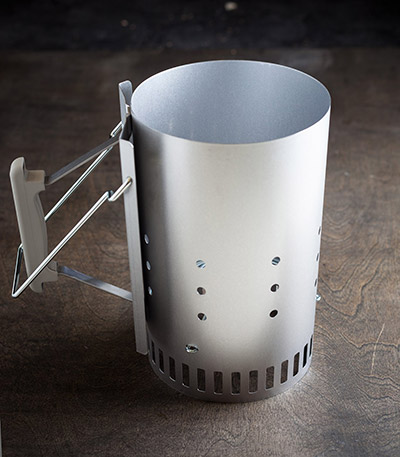 Regardless of which type of charcoal you choose, a charcoal starter is an essential tool. A charcoal starter is used to heat charcoal before transferring it to the grill. A few sheets of newspaper are placed in the bottom, and the coal is piled on top. Once lit, the heat moves upward to ignite the coals. This efficient way of lighting charcoal eliminates the need for lighter fluid. Petroleum-based lighter fluid imparts an undesirable flavor and aroma into the finished product and should never be used.
Regardless of which type of charcoal you choose, a charcoal starter is an essential tool. A charcoal starter is used to heat charcoal before transferring it to the grill. A few sheets of newspaper are placed in the bottom, and the coal is piled on top. Once lit, the heat moves upward to ignite the coals. This efficient way of lighting charcoal eliminates the need for lighter fluid. Petroleum-based lighter fluid imparts an undesirable flavor and aroma into the finished product and should never be used.
Wood
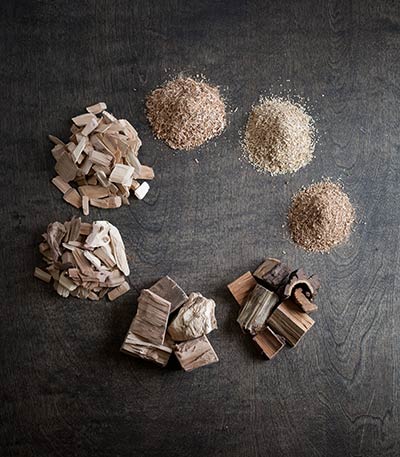 Smoke is a critical ingredient in the barbecue or smoking process because it provides flavor to the products being cooked. Different woods can produce widely different flavors in the end product. Nonresinous hardwoods such as hickory, oak, and maple are used for barbecue, while soft resinous woods such a pine or cedar must be avoided. A general rule of thumb is: If a tree loses its leaves for the winter months, it can be used for barbecuing.
Smoke is a critical ingredient in the barbecue or smoking process because it provides flavor to the products being cooked. Different woods can produce widely different flavors in the end product. Nonresinous hardwoods such as hickory, oak, and maple are used for barbecue, while soft resinous woods such a pine or cedar must be avoided. A general rule of thumb is: If a tree loses its leaves for the winter months, it can be used for barbecuing.

